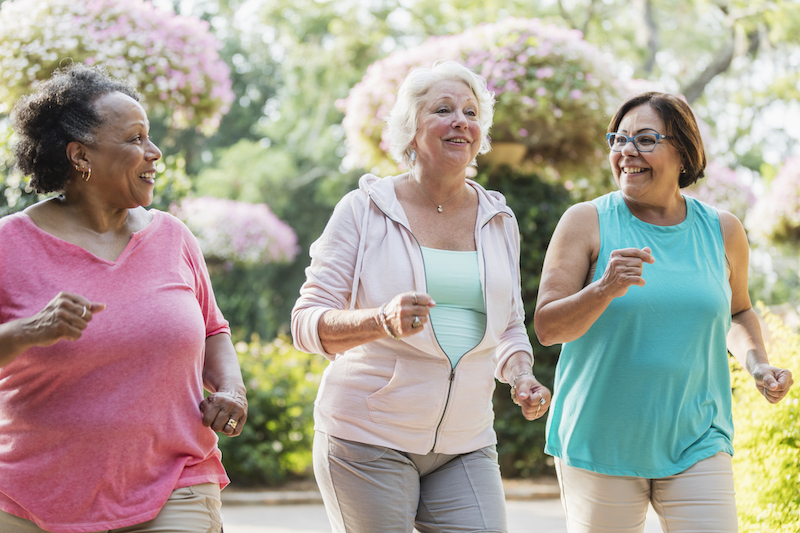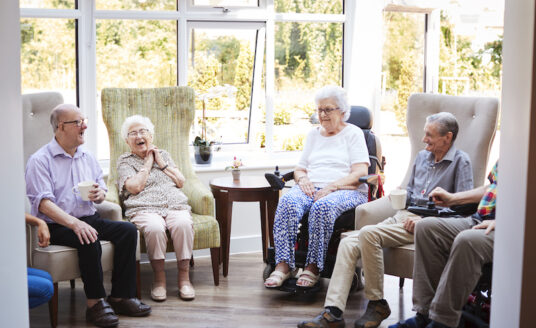Walking, the most basic of exercises, only requires comfortable clothes and a good pair of shoes. You don’t need a trainer, a gym, or an expensive machine — your neighborhood, or a park and path will do. You can even take your dog! And better yet, walking workouts for seniors are one of the best exercises to benefit one’s overall health, particularly for older adults.
Walking Benefits
What does walking do for your body and mind?
- Strengthens muscles
- Promotes a healthy weight
- Helps reduce blood pressure
- Strengthens bones and helps prevent osteoporosis
- Promotes joint health
- Improves sleep
- Lowers the risk for heart disease, stroke, colon cancer and diabetes
- Improves balance and coordination—important for preventing falls
- Strengthens the immune system
- Raises your energy levels
- Reduces anxiety and depression
- Makes you feel good about yourself
These benefits enable you to live independently and safely in your home. Studies have shown that it may also slow cognitive decline and dementia.
Walking also provides social opportunities as you are better able to talk to friends and neighbors. And social interaction is key to good health for older adults. According to Harvard Health Publishing: “A strong social life has been linked with many health benefits, like less risk of depression and longer lifespan.”
Preparing to Walk
If you are starting regular walking workouts for seniors, please consult your physician first. If he or she has any concerns about your walking for exercise, ask if there are some alternative activities you can perform that will still benefit your health and keep you active.
Providing that you are going to start walking, you should start slow, especially if you haven’t exercised for a while. Walk for 10 minutes first and see if you can gradually walk up to 30 minutes per day, five days a week. The pace shouldn’t be strenuous. You can benefit from walking at a moderate intensity level. That level of exercise is defined in various ways. The simplest explanation is that moderate level activity means you can still talk but not sing while exercising. The Centers for Disease Control and Prevention provides more information on exercise intensity levels.
Walking Regularly
If after starting your walking program you develop symptoms like the following, contact your doctor as soon as possible:
- Dizziness
- Chest pain
- Shortness of breath
- Unplanned weight loss
- Sores than won’t heal
Starting a new exercise may cause some muscle soreness, but persistent pain anywhere in your body can be a warning sign. If you develop problems with your feet, talk to your doctor or a podiatrist.
Wear good walking shoes that fit well and are comfortable. Also, if you use a cane or walker, you can use them to help you with your balance and take some of the load off your joints. But don’t let a cane or a walker keep you from walking.
If you can, take a friend along while you walk. This will probably make the walk more pleasant. If you need motivation, set goals like walking to a nearby park or a place with a beautiful view. While you are out, look for new routes with fresh sites to enjoy during a walk. Even in familiar areas you will be surprised by the details you will see when you are out walking.
Walking has been proven to help seniors live longer and live better. See if you can add some steps to your life!
Find more tips to stay healthy and energized on our blog!




